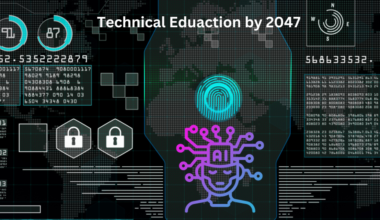Language plays an important role in Mathematical Learning. Students’ mathematical vocabulary learning is a very important part of their language development and ultimately mathematical proficiency. Unlike other languages, Mathematical language is quite different as it is abstract, universal and symbolic and thus relatively difficult to understand.
The term ‘ABSTRACT’ means, we cannot feel it with the help of five sense organs (for example we cannot see number 2 in our surroundings, environment or nature) but it can be explained in concrete fashion (for example: 2 pencils, 2 chairs etc).
The term ‘UNIVERSAL’ means the meaning in Mathematical Language does not change with the reference of time or place (for example: 2+3 = 5 was true in the past, is true in the present and will also be true in future until and unless the basic premises of Mathematics does not change. In the same way, 2+3 equals to 5 in India, 2+3 equals 5 in any other country also).
The term ‘SYMBOLIC’ means, Mathematical Language uses only symbols; Mathematical symbols (like: +, -, ≤, ≥, ×, ÷, %), letters from English Alphabet (like: x, y, z, m etc) and symbols from other languages (for example: α, Φ).
Due to the symbolic and abstract nature of mathematics, students face many problems in learning mathematics and it may generate mathematics phobia among students. The problems faced by students may be as follows:
• Mathematical meanings are more exact and precise than any other discipline. (for example: length of given line segment is 6 centimeter).
• Specific terms and terminology are used to represent or explain a mathematical concept. (for example: line, line segment, ray etc).
• The same mathematical concept may vary in representation in different branches of mathematics. (for example: the concept of POINT varies in representation in 2-Dimensional Geometry and 3-Dimensional Geometry).
• Different terms are used on little variation for the same concept (for example: the boundary of any closed figures made by line segments is known as PERIMETER while the boundary of the closed curved figure is known as Circumference)
• Sometimes students and teacher follow the informal way of teaching and learning (for example: they use the word ‘GOL’ for a ‘CIRCLE’).
• Some concepts have many verbal representations (for example: 3:30 or half-past three).
• Specific challenges with translation (for example: plain can be translated as ‘VIMAAN’ instead of ‘SAMTAL’ in the Hindi language).
• Problems related to PRONUNCIATION (for example: in Hindi language, AAYT is pronounced as AAYAT)
• Some technical specific mathematical terms have homophones in daily life. (for example: In Hindi language mathematical term ‘GOLA’ has homophone in daily like GOLA that is eatable or with which someone can play).
Therefore, to strengthen the mathematical learning, it is necessary to pay attention towards learning of mathematical language.






